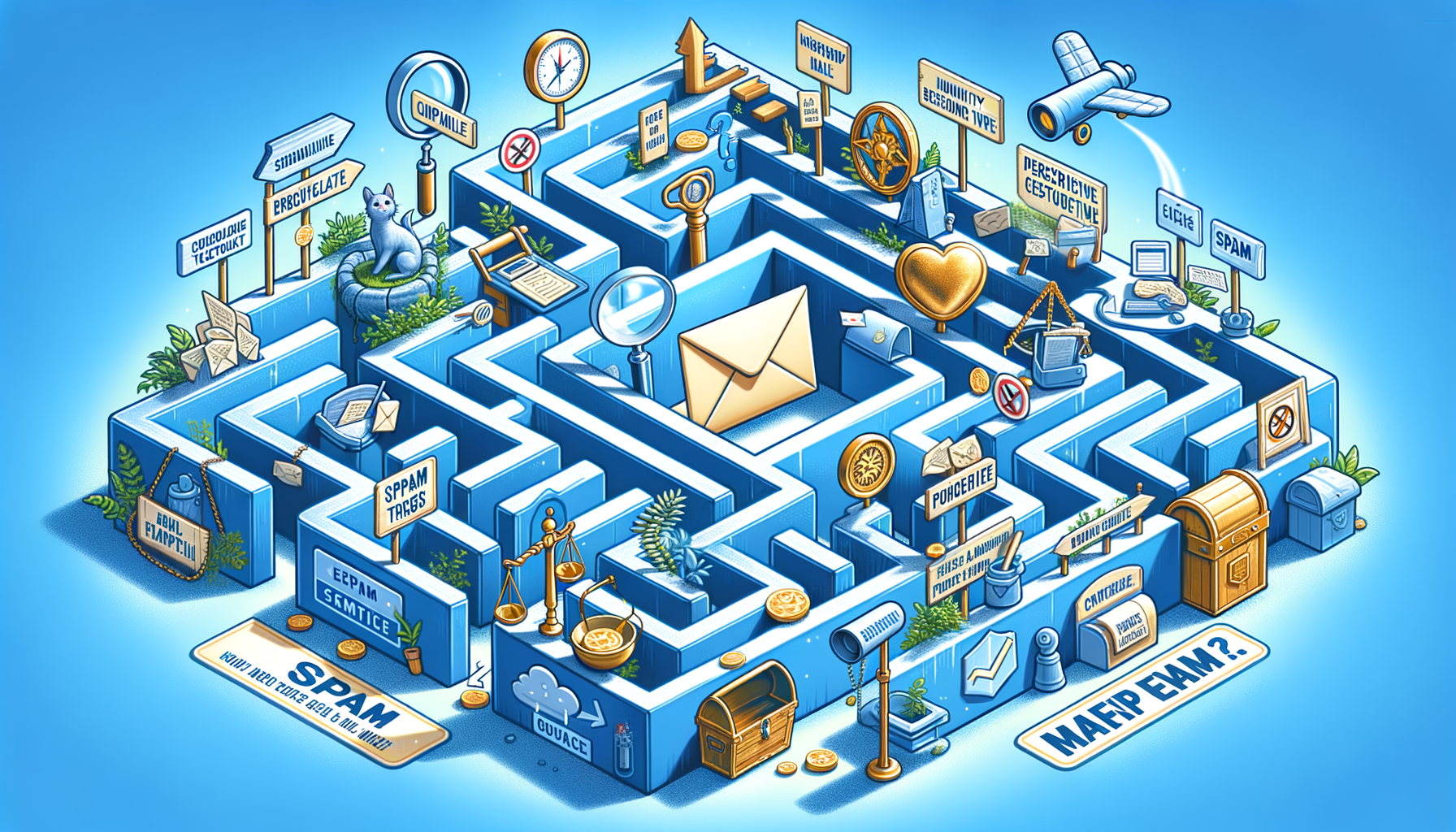“Mastering Email Marketing Techniques: Ensuring Your Messages Don’t End Up in Spam”

Navigating the maze of email marketing can be a challenging endeavor. You spend countless hours crafting the perfect email, finely adjust your targeting strategy, only for your painstakingly constructed message to end up in the dreaded spam box. If this sounds like a familiar predicament, then you’re certainly not alone. This guide aims to provide you with practical measures to ensure your marketing emails land directly in the intended inbox, rather than becoming a resident of the spam folder.
**Understand Email Filters and Spam Triggers**
Email service providers use sophisticated algorithms and filters to determine what constitutes ‘spam.’ These filters evaluate various elements of your email, such as the subject line, content, and sender reputation, before deciding where the email should land. A high spam score resulting from this evaluation can doom your email to the undesirable spam box.
Getting a grasp on such spam triggers can significantly lower your email’s chances of ending up in the spam folder. Some common spam triggers include all-caps subject lines, excessive use of exclamation marks, and spam-like phrases such as ‘earn extra cash,’ ‘increase your sales,’ or ‘money-back guarantee.’
**Email Authentication**
Email authentication verifies that your email originates from an authorized system. It acts as a digital signature, confirming that you’re a legitimate sender and not a spam artist. This reassurance is crucial for your recipients’ email service providers like Gmail, Yahoo, Outlook. Implementing technologies such as Sender Policy Framework (SPF), DomainKeys Identified Mail (DKIM), and Domain-Based Message Authentication, Reporting, and Conformance (DMARC) can help authenticate your emails. Proper email authentication not only helps avoid the spam box but also protects your brand from phishing scams.
**Building a Healthy Email List**
Bypassing the spam folder begins with having a clean and healthy email list. Primarily, this implies that all recipients have willingly subscribed to your mailings, acknowledging that they want to hear from you. Consent is crucial in maintaining a good sender reputation.
Besides consent, hygiene factors such as removing inoperative emails, avoiding bought or rented lists, segmenting audiences smartly, and providing easy opt-out mechanisms can contribute to a healthier email list.
**CAN-SPAM Compliance**
Abiding by the rules outlined in the U.S.’s Controlling the Assault of Non-Solicited Pornography and Marketing Act (CAN-SPAM) can protect you from hefty fines and ensure your emails reach the right inbox. Adhering to practices such as including a valid postal address in your emails, not using deceptive subject lines, clearly identifying your message as an advertisement, and promptly honoring opt-out requests are all part of CAN-SPAM compliance.
**Craft Attention-Grabbing Yet Non-Spammy Subject Lines**
The subject line is the first thing your recipient sees and is often a deciding factor for email service providers’ spam filters. Balancing creativity with non-spamminess in your subject line can be tricky but crucial.
To avoid potential spam filters, keep your subject lines clear and straightforward without excessive use of capital letters, exclamation marks, or words that might seem “spammy.” Also, personalizing your subject lines can go a long way in engaging your recipients, which in turn, tends to improve overall deliverability.
**Content Quality and Relevance**
Ensure your email content’s quality and relevance isn’t compromised in the quest for catchy phrases and buzzwords. Spam filters often pick up emails filled with excessive marketing jargon or images. Your content should be valuable, customer-centric, and accurate, maintaining a healthy text to image ratio.
Also, emails personalized to the recipient’s preferences, past behavior, or stage in the customer journey are less likely to be marked as spam and more likely to engage the recipient.
**Test Your Emails Before Sending**
Preemptively defending your emails against possible spam-box exile, you can use several tools to test your emails. These tools analyze factors like subject line quality, content language, sender reputation, and authentication records to assign a spam score. Some of these tools include Mail-Tester, ISnotSPAM, and GlockApps.
**Monitor Your Email Performance Metrics**
By diligently monitoring your email performance, you can identify patterns, hiccups, and potential areas of improvement. Bounce rate, open rate, click-through rate, unsubscribe rate, and spam complaint rate are all essential metrics that give insight into how your audience is interacting with your emails.
**Never Underestimate the Power of Engagement**
Email service providers use engagement metrics such as open rates, reply rates, and click-through rates to determine sender reputation. High engagement rates typically mean you’re sending relevant content to people who want to hear from you, resulting in a higher likelihood of landing in the inbox instead of the spam folder.
Email marketing is not a one-size-fits-all methodology. Trial-and-error, coupled with a deeper understanding of your audience likes, dislikes, and preferences, is necessary to craft the perfect marketing email that lands right in the desired inbox. By leveraging the strategies mentioned above, you can ensure that your emails safely bypass the spam filter’s snare, resulting in higher engagement rates, increased ROI, and a better brand image.
